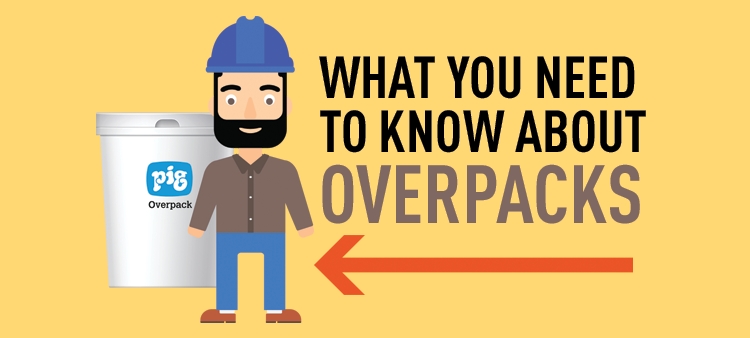The Department of Transportation (DOT) regulates the movement of hazardous materials by road, rail, air and pipeline. With the exception of pipelines, which have their own set of stringent design criteria and standards, hazardous materials that are shipped by road, rail or air must be packaged in containers that meet the specific “performance-oriented packaging” requirements set by DOT.
These standards apply to drums, pails, cans, boxes and bags. There are also standards for overpacks. In the broadest definition, an overpack is a device that contains one or more packages. It provides protection and is often used for the shipper’s convenience or to consolidate two or more packages. Shrink-wrap and banding are, by this definition, overpacking materials. But this article primarily deals with the hard plastic or metal ones that are used to provide a primary container with additional protection during shipment.
Overpack Qualifications, Markings and Ratings
Overpacks are used to protect non-leaking packages. Like drums and other performance-oriented packaging, overpacks have to pass specific tests in order to qualify as overpacks. Because overpacks are designed to provide additional protection, they are stronger and meet more stringent requirements than primary containers.
Overpacks will always have a UN marking on them that specifies the types of materials that the overpack can contain.
It is important to note that an overpack will never have a liquids rating. The rating will always be for solids. This is because the intact package or packages that are put into the overpack are considered to be a “solid,” even if those inner packages are containers holding liquids.
Common Applications for Shipping and Disposal
Overpacks are commonly used to ship drums or other containers that are still intact, but may not make it through the shipping process. An example of this might be a drum that has been long forgotten in the back of a warehouse, and contains a hazardous chemical that is expired or is no longer useful. The container is still intact, but it has some rusty spots. Rusty drums are a transportation no-no because they could leak or cause other problems during shipping. The contents of a rusty drum would either need to be pumped into a “good” drum, or the rusty drum and its contents could be placed in an overpack for shipment.
Labpacking is a variation of overpacking. Laboratories and educational facilities commonly use labpacks – which are small overpacks that usually have a volume of 20 gallons or less – to overpack several small, intact bottles, cans or other containers of chemicals for shipping and disposal. Whether it’s a 55-gallon drum or a bunch of 2 ml samples, overpacking helps ensure that spills won’t cause a problem on the road, rail or airplane.
Leaky Container? You Need a Salvage Drum.
Remember that the limitation of overpacks is that the container inside must be intact. Because we don’t live in a perfect world, containers don’t always remain intact. So, sometimes, it is necessary to ship a damaged, defective or leaking container.
When this is the case, a salvage drum is needed. Salvage drums look almost identical to overpacks, but they are stronger and meet even more stringent performance requirements than overpacks. When containers are placed in salvage drums, they must be surrounded with absorbents that are capable of soaking up any leaks that could occur during shipment.
Sometimes, a container is dual-rated as both an overpack and a salvage drum, and may be labeled as an “overpack salvage drum.” When a container of this type is ready to be shipped, the inappropriate marking should be removed. For example, if it contains an intact container, the words “salvage drum” should be removed or indelibly covered. After that, the proper shipping name, orientation labels and the appropriate word – “overpack” or “salvage drum” – must be written or attached to the container.
Preparing hazardous materials for shipment can be complicated, and should only be done by someone who has had appropriate DOT hazmat shipping training. A person with this training should also be able to help select appropriate overpacks or salvage drums when they are needed.
Use this Overpacks 101 information to help your facility stay on track with DOT regulations. Shop our Drums, Barrels & Overpacks or keep learning about Drums and UN Ratings.




 Get your very own
Get your very own




